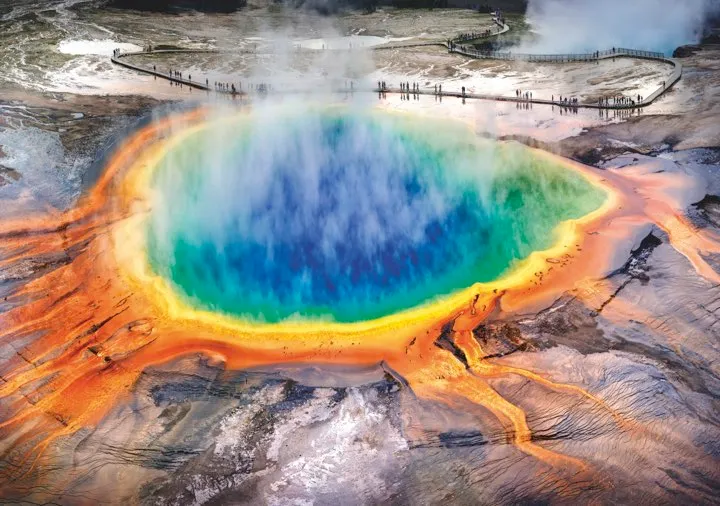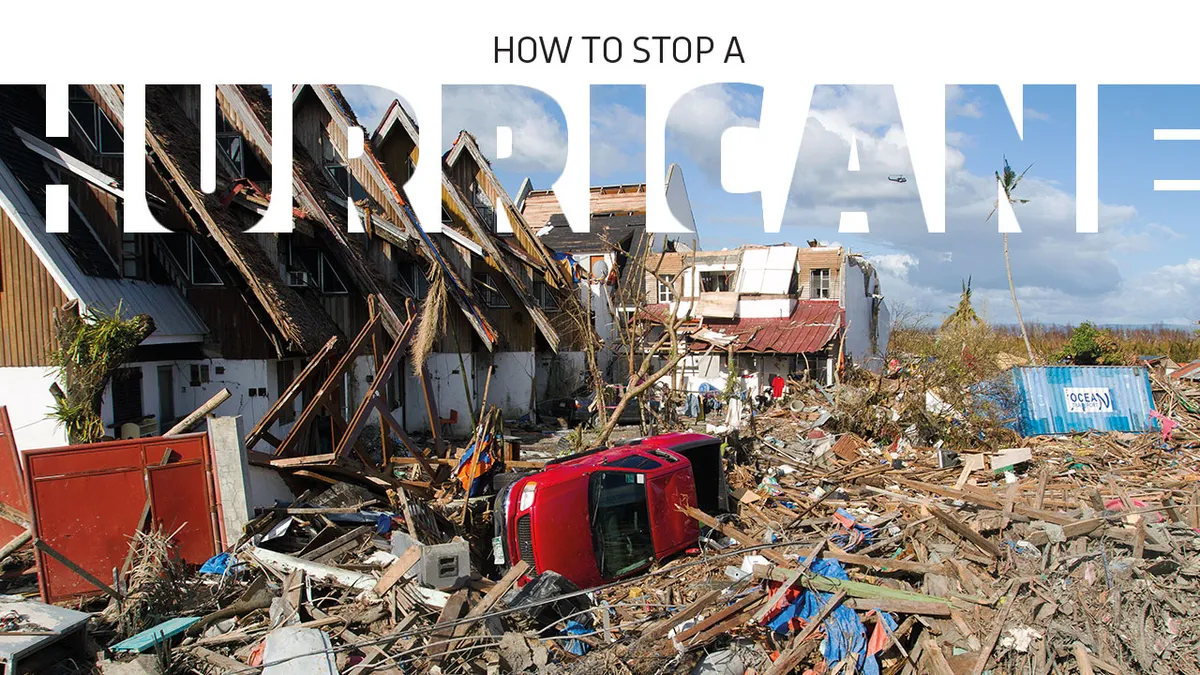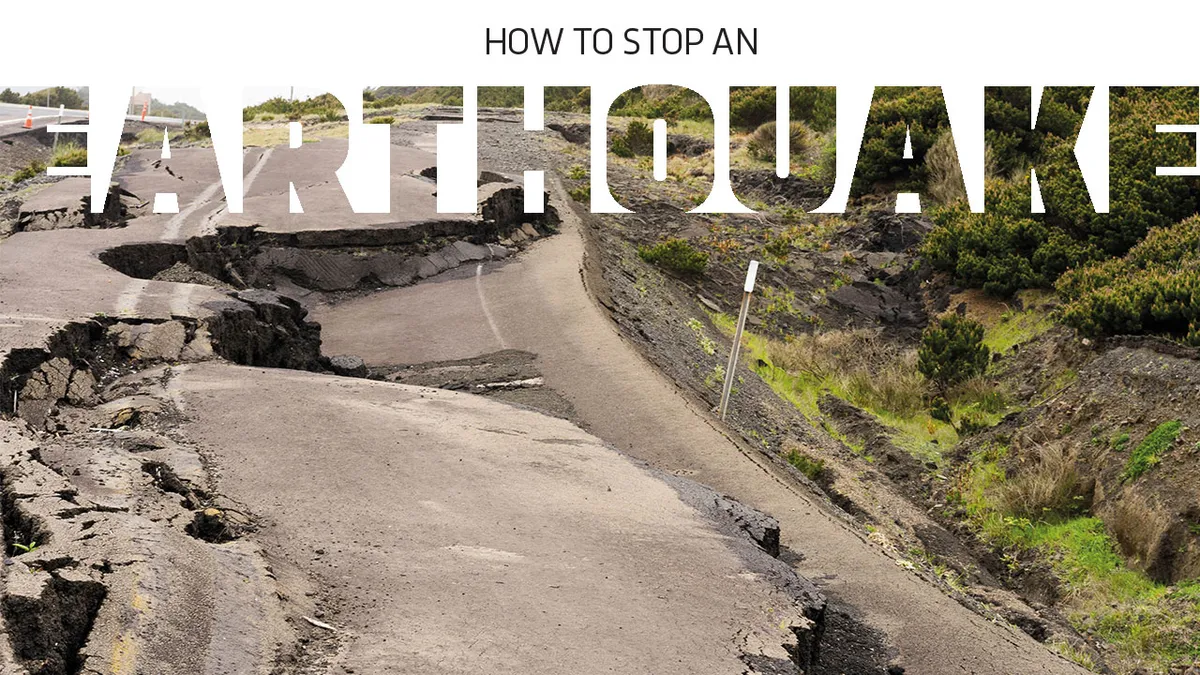Yellowstone is no ordinary volcano. Three times in the last couple of million years, this so-called supervolcano, located in the western US, has blown itself apart in some of the biggest explosions ever known.
The last, which happened around 630,000 years ago, pumped out enough ash to cover most of the country, and left behind a giant crater – the Yellowstone Caldera – more than 70km (44 miles) across.
The huge volumes of sulphur gas blasted into the atmosphere by the eruption would have blotted out the Sun, causing global temperatures to plunge and spawning a volcanic winter that lasted for several years.
But Yellowstone is still restless. Earthquakes are common, the ground repeatedly swells and sinks, and the area is peppered with boiling springs, mud pots and geysers.
A gigantic body of magma still lurks beneath the volcano, so another massive eruption could happen some time in the future. There are concerns that the resulting volcanic winter might destroy our civilisation, but not if we can take action to try and stop it first.
And that’s just what Brian Wilcox and a team of researchers at NASA’s Jet Propulsion Laboratory have proposed. The idea is to drill into Yellowstone to ‘let off steam’.
I’ve often been asked about this particular solution, and my answer has always been that such a venture would be akin to sticking a drawing pin in an elephant’s bottom. In other words, the effect would be pretty much zero.
But NASA has given the idea a little more thought and come up with something that might actually work. This is geoengineering on a huge scale.
In NASA’s plan, the drawing pin becomes an 8km-deep borehole drilled into Yellowstone’s hydrothermal system. This is the vast body of hot groundwater that surrounds the magma chamber and feeds the springs and geysers. The hydrothermal system absorbs more than two-thirds of the heat generated by the magma.

In NASA’s scheme, huge quantities of cold water would be pumped down the borehole, helping the hydrothermal system suck out even more heat; the idea being that the magma would cool, get stickier, and start to congeal. This, in turn, would mean that it was too viscous to rise towards the surface and feed an eruption.
If Yellowstone were ready to blow, it would need to be cooled by 35 per cent to stop the eruption in its tracks, and this wouldn’t come cheap. NASA estimates the cost would be $3.5bn (£2.4bn). It would take hundreds, or even thousands, of years to accomplish, which is a long time to keep the politicians who hold the purse strings on board.
Wilcox acknowledges that this would not be easy, and cautions against doing anything without a detailed study of the pros and cons. “I think it would be unlikely and even foolish to attempt this at any scale, unless a thorough
modelling effort had been conducted which shows that the possibility of triggering an eruption was low, almost zero,” he says.
But there’s good news. Superheated water, returned to the surface via the borehole, could be used to drive turbines and generate energy for the region, which could cover much of the cost.
“If it appears possible that economically competitive geothermal power could be produced as part of the ‘defanging’ of a supervolcano, [this] could close the economic equation sufficiently that people might attempt it,” Wilcox observes, perhaps a little optimistically.
There are dangers, of course, and there’s the possibility that drilling into a volcano that’s primed and ready to go might trigger the blast it’s trying to prevent. But with the catastrophic consequences for humans of a future super-eruption, it may turn out to be a risk we have to take.
How it works
NASA wants to pump water into the Yellowstone volcano to make the magma too sticky to rise.

1
An 8km-deep borehole is drilled into the hydrothermal system.
2
This vast body of hot groundwater surrounds the shallow magma chamber and absorbs more than two-thirds of the heat generated there.
3
Huge quantities of water are pumped down the borehole, cooling the hydrothermal fluids so that they can suck out even more of the magma’s heat.
4
The magma cools and starts to congeal, making it more difficult for it to reach the surface and feed an eruption.
5
Superheated water returned to the surface via the borehole could be used to drive turbines and generate electricity.


